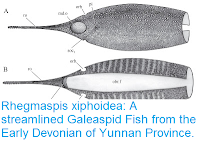Hagfish, Myxinidae, are currently classified into six genera and 81 species worldwide. They are characterised by an Eel-like body shape and 1–16 pairs of gill apertures and gill pouches; however, they have no jaws, eyes, or fins. Recent research using morphological and molecular characteristics revealed that hagfishes comprise three subfamilies: Eptatretinae, Myxininae, and Rubicundinae. There have been several unresolved issues regarding the number of recognized genera in the subfamily Eptatretinae; however, its genera were recently reorganised taxonomically based on morphological and molecular data. Currently, the Eptatretinae includes a single genus, Eptatretus, which is characterised by the presence of more than two pairs of gill apertures; notably, Eptatretus is the most species-rich Myxinid genus, currently comprising 51 valid species in the northwestern Pacific Ocean (e.g. Korea, Taiwan, and Japan) and coastal waters around Asia (e.g. China, Philippines, and Vietnam). Surveys of the deep sea and other hard-to-reach areas using special-purpose submarines are increasingly revealing new or cryptic species worldwide.
In a paper published in the journal ZooKeys on 13 April 2020, Young Sun Song and Jin-Koo Kim of the Department of Marine Biology at Pukyong National University, describe a new species of Eptatretus, based on examinations of both morphological and genetic characteristics of Hagfish specimens from the southwestern Sea of Korea.
The new species is called Eptatretus wandoensis, where 'wandoensis' means 'from Wando' in reference to Wando County in South Korea; the new species is described from three specimens caught in Fish traps at depths of 60-80 m off the coast of Yeoseo Island, which forms part of Wando County.
Sampling location of Eptatretus wandoensis in Korea. Song & Kim (2020).
The body of Eptatretus wandoensis is elongated; laterally compressed at the trunk and strongly compressed at the tail. The rostrum is slightly blunt and round. Nasal-sinus papilla are absent. Eyespots are present. The pre-eyespot area is shorter than the branchial region. There are three pairs of barbels on the head, the first and second barbels are nearly equal in size; the third barbel is longer. The tips of the third barbels extend at the mouth. There are five pairs of gill pouches and apertures; the gill apertures are arranged in a regularly spaced straight line. Teeth are comb-like, arranged in two rows with tips sharp and curved rearward; in the outer row there are 3 multicusped and 7–8 unicusped teeth; in the inner row, there are 2 multicusped and 8–9 unicusped teeth; the total number of cusps is 40–43. The dental muscle is thick and long, the posterior tip of the dental muscle is located in first the first gill pouuch. There are 14-18 prebranchial slime pores, 4 branchial slime pores, 46-49 trunk slime pores, and 9-11 tail slime pores, for a total of 74-82. The osterior-most efferent branchial duct is confluent with the pharyngocutaneous duct on the left side, forming a larger aperture. All efferent branchial ducts are equal in length. The ventral aorta consists of two side branchial arteries and one medial section, bifurcating at approximately the third or fourth gill pre. The first through third pairs of afferent branchial arteries, which cannot be regarded as branches of the ventral aorta, branch from side branchial arteries; however, the fourth and fifth afferent branchial arteries on left and right branch from the medial section of the ventral artery. The ventral fin-fold is weakly developed or vestigial, beginning approximately at the middle of the body and extending to the cloaca. The caudal fin-fold is weakly developed, beginning posterior to the cloaca and extending around the tail to the dorsal surface.
Overall view of Eptatretus wandoensis, (A) holotype, PKU 62167, 292.0 mm in total length, (B) paratype, PKU 62169, 202.0 mm total length, (C) paratype, PKU 62171, 290.0 mm total length, (D) paratype, PKU 62173, 275.0 mm total length, photographed prior to preservation. Scale bars are 1 mm. Song & Kim (2020).
The body is uniformly dark brown or purplish dorsally and white ventrally; a white mid-dorsal line is conspicuous, beginning from the upper region of the first prebranchial slime pore to around the tail. The eyespots are conspicuous; the whole barbels are pale, as is the area around mouth. Each gill aperture and pharyngocutaneous duct aperture has a white margin; most slime pores are blackish, except for those of the tail region, which are the same as the surrounding skin in colour. The area around the cloaca is white; the ventral fin-fold has a white line along the ventral midline; the posterior margin of the caudal fin is pale.
See also...
Follow Sciency Thoughts on Facebook.







